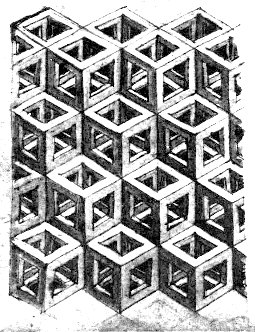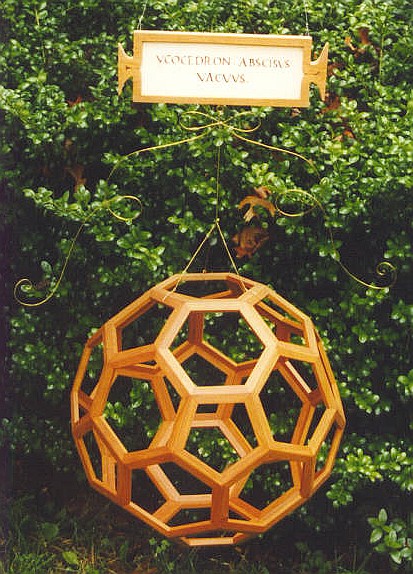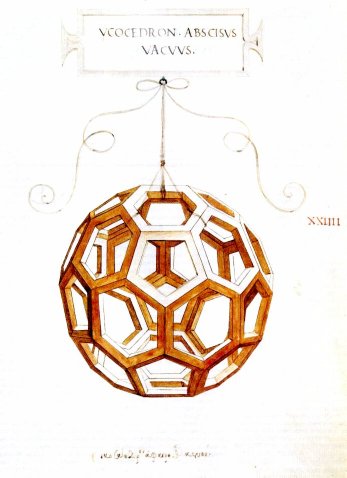 Leonardo
da Vinci's Polyhedra
Leonardo
da Vinci's PolyhedraThese are the first illustrations of polyhedra ever in the form of "solid edges." The solidity of the edges lets one easily see which edges belong to the front and which to the back, unlike simple line drawings where the front and back surfaces may be visually confused. Yet the hollow faces allow one to see through to the structure of the rear surface. This is a brilliant new form of geometric illustration, one worthy of Leonardo's genius for insightful graphic display of information. However, it is not clear whether Leonardo invented this new form or whether he was simply drawing from "life" a series of wooden models with solid edges which Pacioli designed. If Pacioli designed these models, then he deserves the credit for this new "solid edge" idea, but it is likely that Leonardo designed them.
There are roughly sixty similar illustrations in the book, mostly in pairs contrasting models with solid faces and models with this solid edge technique, such as these two versions of the dodecahedron:
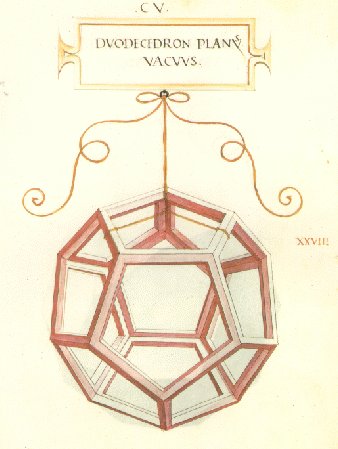
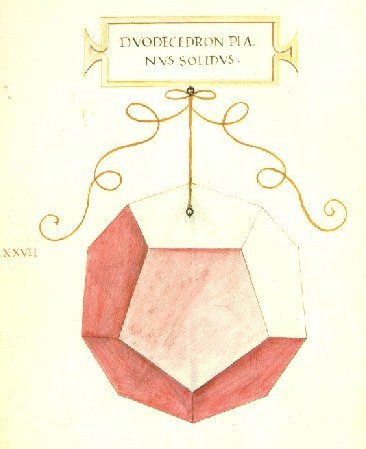
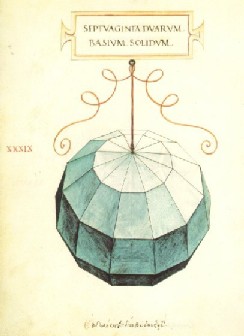
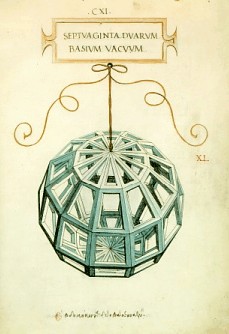
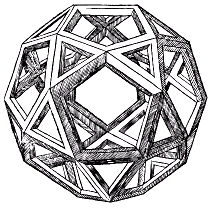
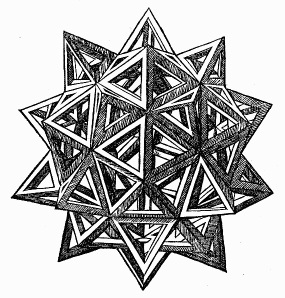
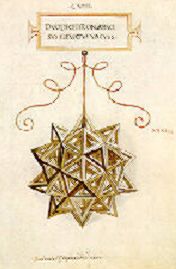
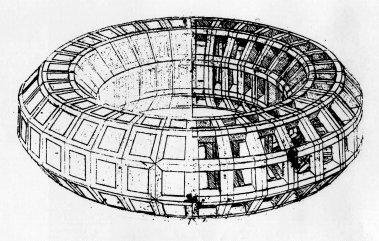
In addition to the illustrations for Pacioli's book, we find other
Leonardo
polyhedra of interest. Here is a mazzocchio drawn by Leonardo in
his solid-edge form.
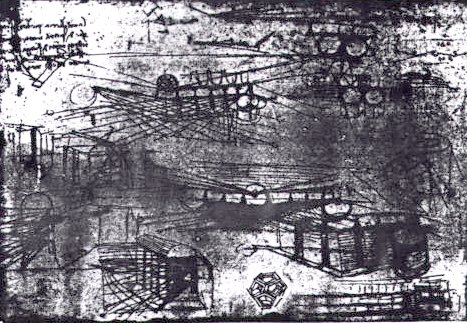
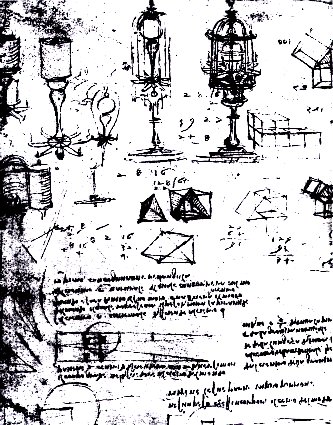
Above is a drawing showing studies for a fountain, in the middle of which we find a doodle of a tetrahedron inscribed in a cube.
